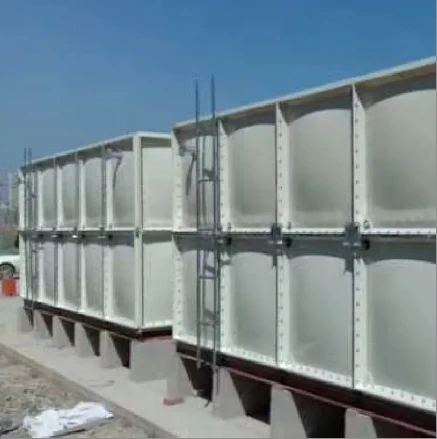loading...
- No. 9, Xingyuan South Street, Dongwaihuan Road, Zaoqiang County, Hengshui, Hebei, China
- admin@zjcomposites.com
- +86 15097380338
- Welcome to visit our website!
FRP Water Softener Tanks for Efficient Water Treatment Solutions
Understanding FRP Water Softener Tanks
Water softening is an essential process for households and industries that rely on hard water sources. Hard water, characterized by high levels of calcium and magnesium ions, can lead to a variety of issues, including scale buildup in pipes and appliances, reduced soap effectiveness, and skin irritations. One effective solution to combat these problems is the use of a Water Softener, and among the various materials available for these systems, Fiber Reinforced Plastic (FRP) tanks have gained popularity.
What is an FRP Water Softener Tank?
An FRP water softener tank is a container made of fiber reinforced plastic, which is created by combining plastic with glass or carbon fibers. This composite material offers significant advantages over traditional tanks made of steel or concrete. The lightweight nature of FRP, along with its resistance to corrosion, makes it an ideal choice for water treatment applications. They are commonly used in both residential and commercial settings to soften water effectively.
Advantages of FRP Water Softener Tanks
1. Corrosion Resistance Unlike metal tanks, FRP tanks do not rust or corrode over time, which is particularly beneficial in environments where chemicals are present. This durability extends the life of the tank and reduces maintenance costs.
2. Lightweight and Easy to Install The lightweight design of FRP tanks simplifies the installation process. They can be transported and handled without the need for heavy lifting equipment, making them a preferred option for many installation scenarios.
3. Energy Efficiency FRP tanks are excellent insulators, which can help maintain the temperature of the water inside, especially in colder climates. This energy efficiency can lead to lower heating costs over time.
frp water softener tank

4. High Strength-to-Weight Ratio The reinforcement fibers used in FRP provide a high strength-to-weight ratio, meaning that despite being lightweight, these tanks are incredibly strong and can withstand high pressures without risk of failure.
5. Variety of Sizes and Configurations FRP tanks come in a wide range of sizes and configurations, making it easy to find a system that fits the specific needs of any water treatment system.
How Do FRP Water Softener Tanks Work?
The primary function of a water softener tank, regardless of its material, is ion exchange. In this process, hard water passes through the tank filled with resin beads, which are coated with sodium ions. As the hard water flows through, the calcium and magnesium ions are exchanged for sodium ions, effectively softening the water. Once the resin beads become saturated with calcium and magnesium, they are regenerated by flushing them with a brine solution, replenishing the sodium ions and allowing the cycle to begin anew.
Maintenance of FRP Water Softener Tanks
While FRP tanks are durable and require less maintenance than traditional tanks, regular checks and occasional servicing are still essential. It’s important to monitor the salt levels in the brine tank and ensure that the resin beads are functioning effectively. Over time, resin beads may need to be replaced to maintain optimal performance.
Conclusion
In conclusion, FRP water softener tanks are a robust and effective solution for those looking to soften their water. Their numerous advantages, including corrosion resistance, lightweight construction, and high strength, make them a valuable choice for both residential and commercial applications. As water quality continues to be a significant concern worldwide, investing in an FRP water softener tank can lead to long-term benefits, including better appliance performance, reduced maintenance costs, and improved overall water quality. For anyone dealing with hard water, considering an FRP tank could be a step toward achieving cleaner, softer water.
-
The Rise of FRP Profiles: Strong, Lightweight, and Built to LastNewsJul.14,2025
-
SMC Panel Tanks: A Modern Water Storage Solution for All EnvironmentsNewsJul.14,2025
-
GRP Grating: A Modern Solution for Safe and Durable Access SystemsNewsJul.14,2025
-
Galvanized Steel Water Tanks: Durable, Reliable, and Ready for UseNewsJul.14,2025
-
FRP Mini Mesh Grating: The Safer, Smarter Flooring SolutionNewsJul.14,2025
-
Exploring FRP Vessels: Durable Solutions for Modern Fluid HandlingNewsJul.14,2025
-
GRP Structures: The Future of Lightweight, High-Performance EngineeringNewsJun.20,2025
